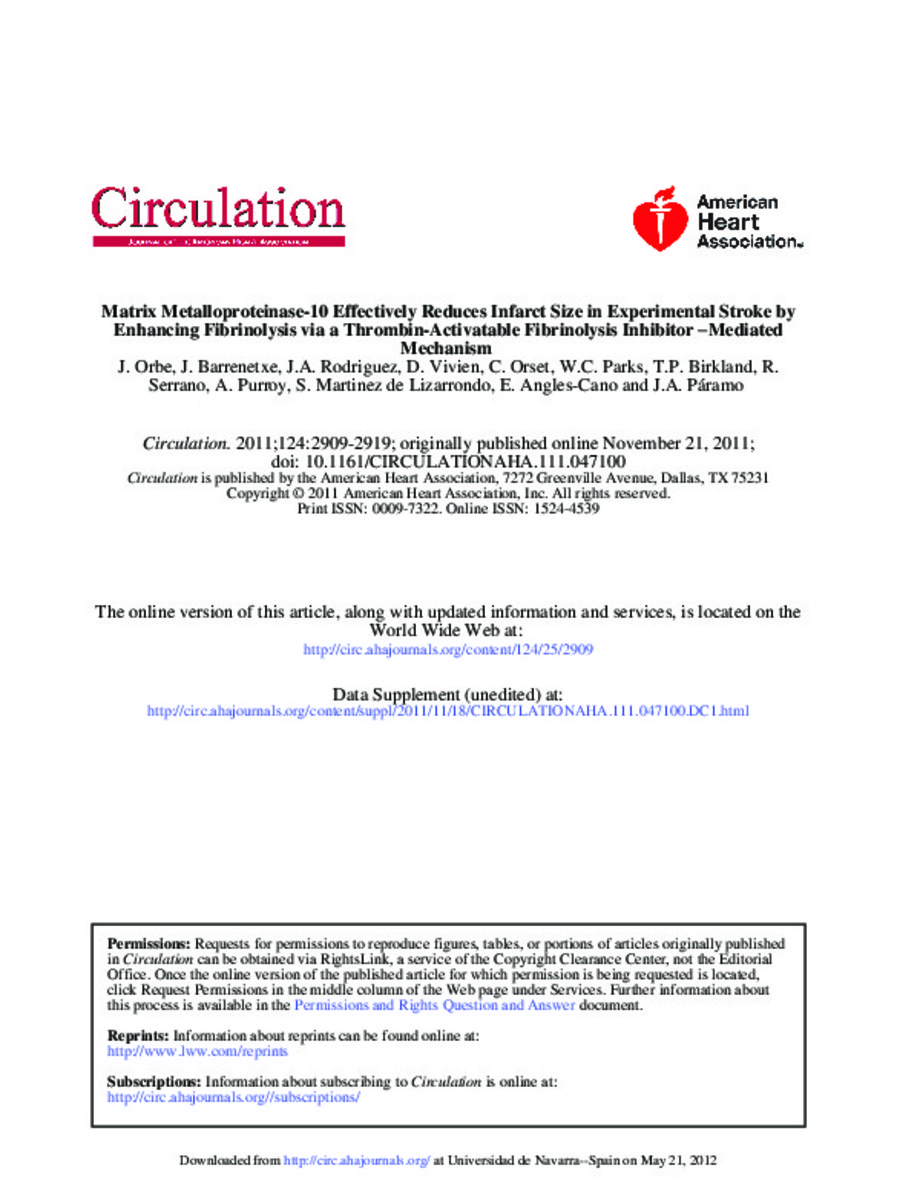Matrix metalloproteinase-10 effectively reduces infarct size in experimental stroke by enhancing fibrinolysis via a thrombin-activatable fibrinolysis inhibitor-mediated mechanism
Keywords:
Fibrinolysis
Metalloproteinases
Stroke
TAFI
Thrombolysis
Publisher:
Lippincott, Williams & Wilkins
Citation:
Orbe J, Barrenetxe J, Rodriguez JA, Vivien D, Orset C, Parks WC, et al. Matrix metalloproteinase-10 effectively reduces infarct size in experimental stroke by enhancing fibrinolysis via a thrombin-activatable fibrinolysis inhibitor-mediated mechanism. Circulation 2011 Dec 20;124(25):2909-2919.
Statistics and impact
0 citas en

0 citas en

Items in Dadun are protected by copyright, with all rights reserved, unless otherwise indicated.







